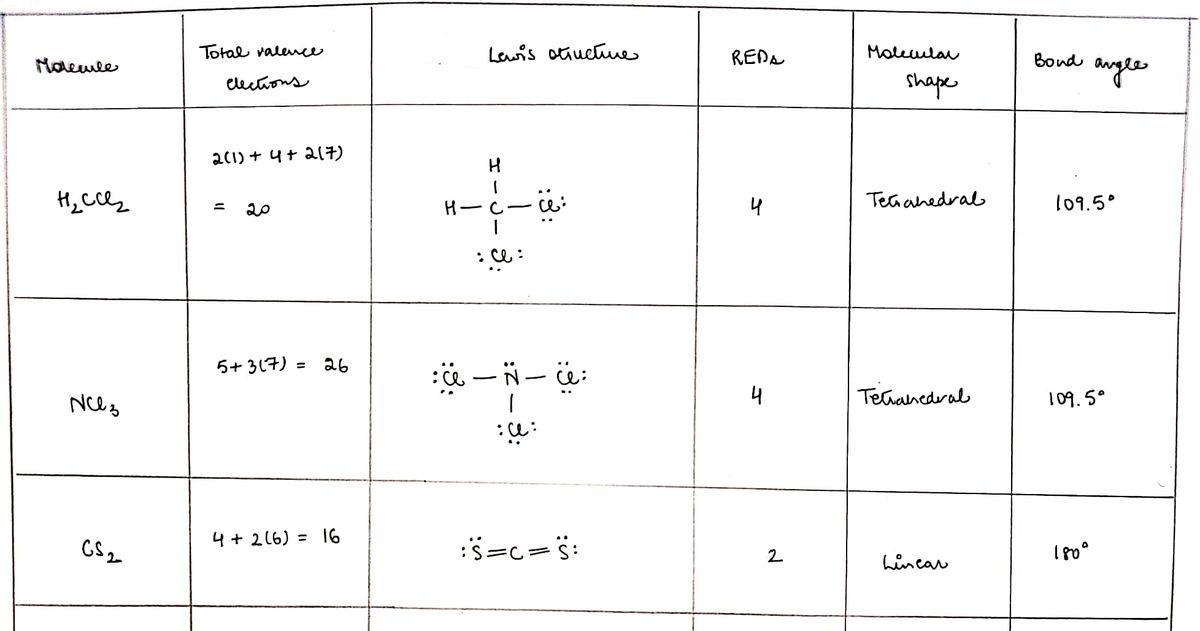- Draw Lewis structures for each of the following. Give the total number of valence electrons, select from the lists the number of Regions of Electron Density (REDs) around the central atom, the molecular shape, and the bond angles. - Do not put covalent bonds between metals and nonmetals. - Put brackets around anions to show both charge and quantity REDS 0, no central atom 2 3 4 Shapes tetrahedral pyramidal bent trigonal planar linear diatomic monatomic ions Bond Angles 109.5° 120° 180° none, no central atom 1. H2CCI2 valence e = REDS = shape= bond angles = 2. NC13 valence e = REDS = shape= bond angles = 3. CS2 valence e = REDS = shape= bond angles = dihydrogen carbon dichloride nitrogen trichloride carbon disulfide
Formal Charges
Formal charges have an important role in organic chemistry since this concept helps us to know whether an atom in a molecule is neutral/bears a positive or negative charge. Even if some molecules are neutral, the atoms within that molecule need not be neutral atoms.
Polarity Of Water
In simple chemical terms, polarity refers to the separation of charges in a chemical species leading into formation of two polar ends which are positively charged end and negatively charged end. Polarity in any molecule occurs due to the differences in the electronegativities of the bonded atoms. Water, as we all know has two hydrogen atoms bonded to an oxygen atom. As oxygen is more electronegative than hydrogen thus, there exists polarity in the bonds which is why water is known as a polar solvent.
Valence Bond Theory Vbt
Valence bond theory (VBT) in simple terms explains how individual atomic orbitals with an unpaired electron each, come close to each other and overlap to form a molecular orbital giving a covalent bond. It gives a quantum mechanical approach to the formation of covalent bonds with the help of wavefunctions using attractive and repulsive energies when two atoms are brought from infinity to their internuclear distance.


Step by step
Solved in 3 steps with 3 images









